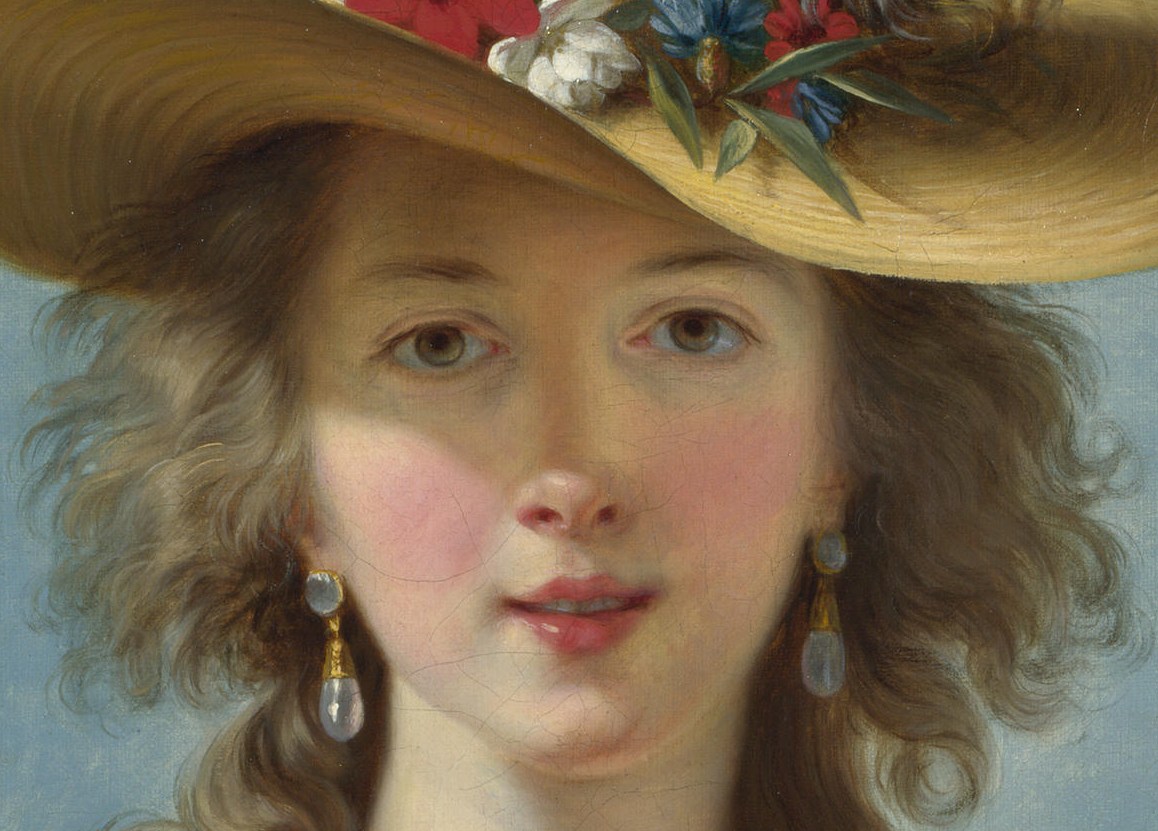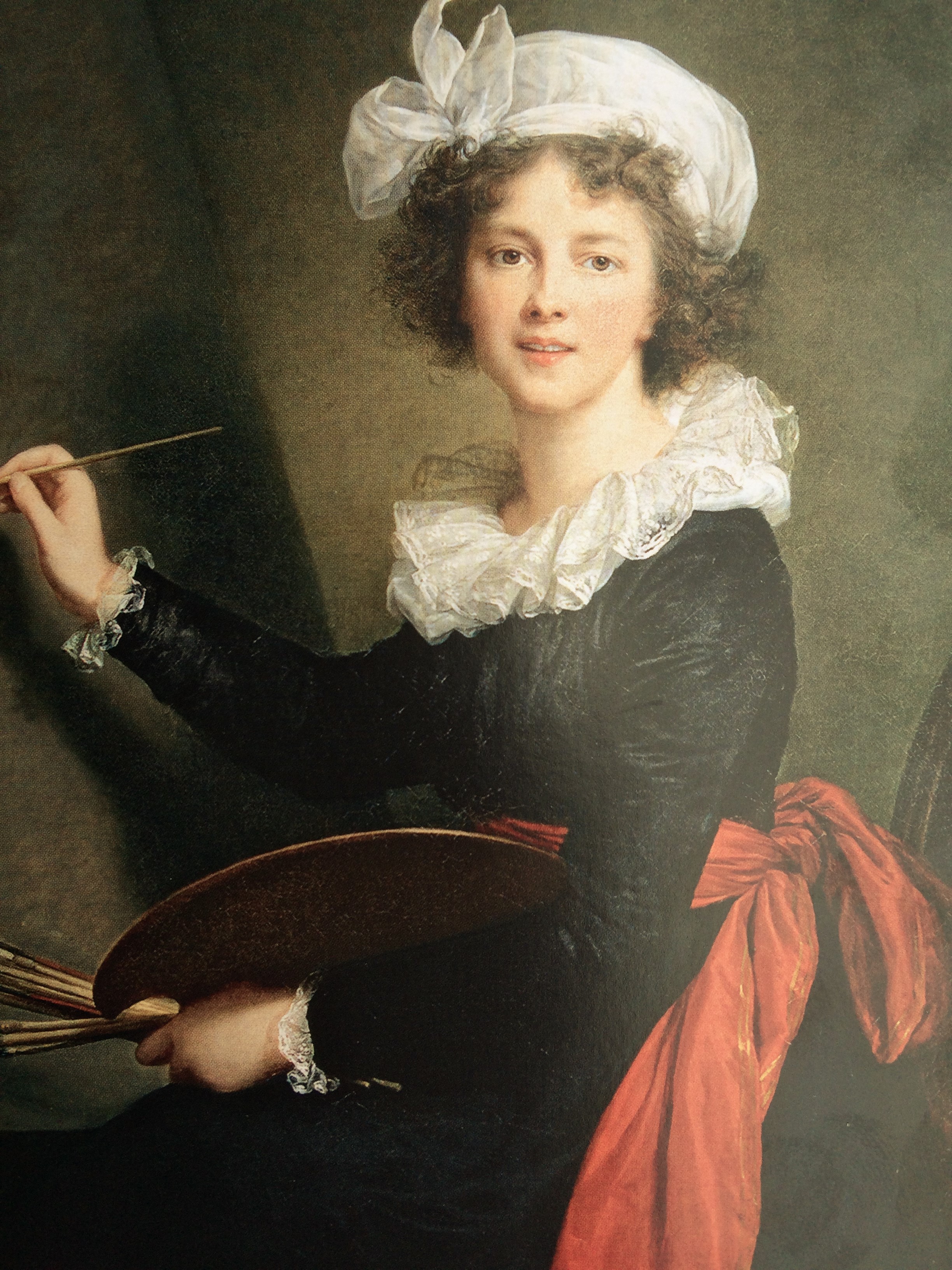A Valentine: Vigée Le Brun Conquers New York
At the Metropolitan Museum of Art, membership previews were held this week for the latest offering, Vigée Le Brun: Woman Artist in Revolutionary France. Hers was not a name I was familiar with, yet she was French, so I rushed right over to investigate. Installed in the Special Exhibition Gallery on the first floor off the Roman and Greek wing, the show is made up of 80 paintings that have come to New York by way of Paris.
There it had been installed at the Grand Palais, that massive showplace combining a classical stone facade with a surfeit of breathtaking Art Nouveau ironwork. Nothing short of a real eye-opener, the Paris exhibition consisted of a whopping 159 paintings by Vigée Le Brun drawn from both private and public sources. We New Yorkers are getting the slimmed down version, but one none the less gorgeous.
Who is Vigée Le Brun?
Elisabeth-Louise Vigée Le Brun (French, 1755-1842) was the daughter of a talented portrait painter, from whom she received her first instruction. Her father died when she was 12, but her mother, recognizing the girl's talent, shepherded her daughter to galleries and museums, where she studied the techniques of the Italian and Flemish artists in Paris’s royal collections.
Vigée Le Brun and Marie Antoinette: Girls Just Want to Have Fun
As women were not admitted to the art academies in those days, Vigée le Brun was very much a self-taught artist. But as her fame spread, she was asked by the mother of Marie Antoinette to paint her daughter’s portrait so she could see her, then the young Queen of France, in all of her royal splendor. That would be the first of 30 commissions that Vigée le Brun would receive for paintings of Marie Antoinette and her children.
Many of the stories that have come down to us about Marie Antoinette depict the haughtiness and self-indulgence of the last queen of France, but few give any indication of her softer side as can be seen in this exhibition.
One painting shows the artist at her easel, working on a likeness of the queen. As the paint brushes slip to the floor, Marie Antoinette bends to pick them up. The scene suggests a kindness on the queen’s part, a moment between equals, rather than one between a queen and her court painter.
Couture Unfit for a Queen
In another painting, Vigeé Le Brun, depicted the queen wearing a simple summer dress, a fashion very much in vogue at that time, but the painting infuriated the queen's subjects who saw it as an outfit befitting commoners, not royalty. At which Vigeé Le Brun painted her subject in the identical pose, holding yet another rose in hand but wearing the splendid regal gown you see above. To see the two paintings hanging side-by-side in the current show and to hear how they came about was amusing, the incident suggesting a more playful side of Marie-Antoinette, before she was sent to the guillotine by the revolution.
Thanks to the intercession of the King Louis XVI, the young painter won admission to France’s royal academy in 1783 and went on to become one of the leading portraitists of her time. What's more she was widely regarded as one of the finest colorists of her day. Her palette is sensuous, with unexpected and dazzling combinations.
A beautiful woman with an engaging manner and an excellent conversationalist with a fine mind, the artist was known for being able to put her sitters at ease. And it appears that all who sat for her, predominantly women, were themselves beautiful—fresh and natural—with luminous skin, glinting eyes, and looking very much to the manner born. As is the artist, herself, in the self-portrait with the straw hat.
Vigée Le Brun and the Finance Minister
Of all the well-born men who sat for her, my favorite painting was that of Charles Alexandre de Calonne, Louis XVI’s finance minister, as he holds a recently penned letter to the King, while looking somewhat amused. In a memoir written a few years before her death at 87, Vigée Le Brun would recount how malicious gossips, jealous of her success, spread rumors that she and the finance minister were having an affair, which she maintained was not the case.
But if you look at the expression on his face, the intensity of the gaze, it's not hard to believe he was quite fond, if not half in love with her.
Because of Vigeé Le Brun’s close connections to the court and to the aristocracy, she fled France with her young daughter at the outset of the revolution in 1789. Arriving in Italy without much more than her paints and brushes, she quickly created a mother-daughter portrait and propped it in a window to display her talents. Once again, she became a great favorite of the nobility, and for the next 12 years, she would work her magic in the European capitals of Naples, Vienna and St. Petersburg, after which she returned to Paris.
The last painting was a special to see, as it rarely leaves Versailles, other than to go to Paris and back now and again. There we see Marie Antoinette with her children—the Dauphin, the heir to the throne of France, standing to the right, pointing to an empty bassinet that's symbolic of a fourth child who died young.
What's hard to understand is why this is the first retrospective and only the second exhibition – the other being at the Kimball Museum in Fort Worth, Texas in the summer of 1982—of Vigée Le Brun's work in modern times.
The curator of European paintings at the Met, Katherine Baetjer, who has been at the Met for 40 years, said that this is the first solo exhibition by a woman artist. Well, it's about time! Roberta Smith, the art critic for the New York Times called the exhibition “ravishing... long-overdue”.
"Only in painting have I found happiness," the artist once said. In this exhibition that runs until May 15, 2016, the happiness she found is very much in evidence.
Hope to see you next week. In the meantime, happy Valentine's Day! And I hope you will take time to enjoy this post, my valentine to you and the Metropolitan Museum of Art's valentine to New York: Vigée Le Brun: Woman Artist in Revolutionary France.
Remember, sharing is caring! Merci beaucoup. A bientôt mes amis...








